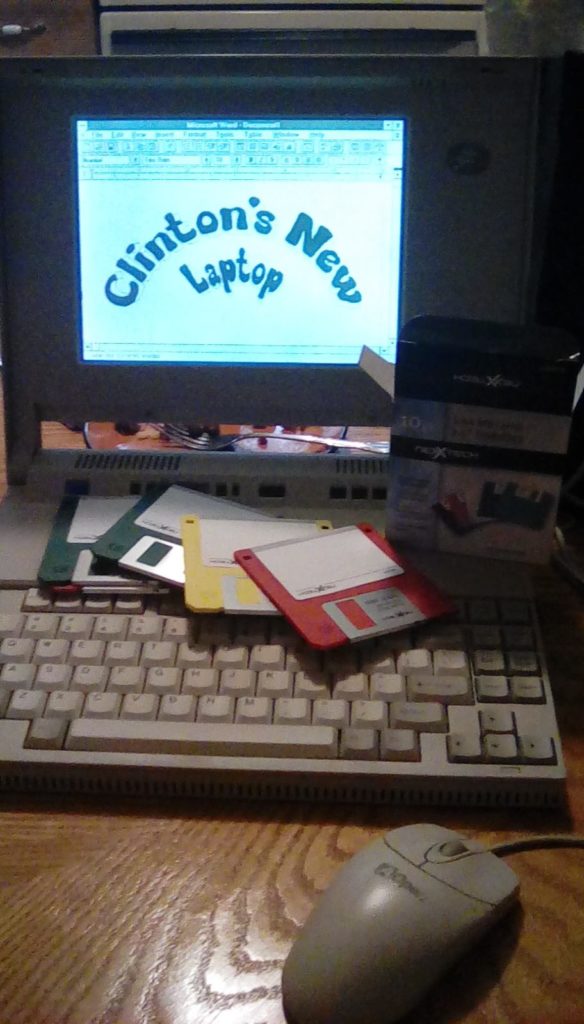I’ve been typing lots of stuff on a 386 laptop lately. It’s an IBM PS/2 L40 SX, upon which I’ve installed Windows 3.1 and Microsoft Word 2.0.

Quick tip: In Windows 3.1 there was no user folder or Documents folder. When you went to save a Word file, the default would be to save it inside the program files folder for Word, which is a weird place to keep your documents. But if go in to properties dialogue for the Word shortcut in Program Manager, then you can change the working directory of the application. That way you can choose where in the DOS path the program thinks it is running. So if you made a folder called C:\DOCS and then made that the working directory for Word then your first File->Save command would automatically open up within your new “My Documents” folder.
It’s been a great way to avoid the distractions of the internet, and basically anything other than text. The laptop came out in 1991 and can run a desktop dictionary which pops up in under 4 seconds whenever I select a word to define using a system-wide hotkey.

I also have a Palm Pilot which has my name engraved on the back of it. It’s a Palm Vx, and I did the engraving myself on the CNC machine in Grade 12 metal shop, having originally designed it in CorelDRAW!
The Palm Pilot was a pocket computer which gave you a calendar, addressbook, todo list and notebook while also allowing many “apps” to be installed on it’s OS. Apart from wireless connectivity, it did very well much of what Smartphones today do much worse. The Palm Vx came out in 1999, and is basically the same specifications hardware as the IBM L40 SX, except that it fits in my pocket.

From 1991 to 1999, the power of a laptop computer was reduced into something as slim as a modern smartphone. And it could run many of the apps you use right now, albeit without very many languages, or super quick calculations, or high fidelity compared to analogue media. Nevertheless, by the 1990s computers had — more or less — began doing everything we use them for today.
In today’s social landscape, given the concern — and, even, paranoia — one might feel about modern technology, I find myself feeling a great nostalgia for my childhood of 20mhz processors where I knew that the hardware was only capable of executing programs I could see were running. The computer ran somewhat slow, but that’s because it was slow, and the software was written optimized to go as quick as possible. There was a balance which demonstrated to me, the user, that the software couldn’t do anything behind my back because the hardware wasn’t good enough!
When looking for peace of mind in the modern technological landscape, maybe hardware which is slow enough for our human brains to keep tabs on offers a peace of mind which could alleviate contemporary worries. Instead of a nostalgia, maybe a return to the days of 20 mhz processors and 8 megabytes of RAM is a renewal of audibility and comprehension of our digital world.
Leave a Reply